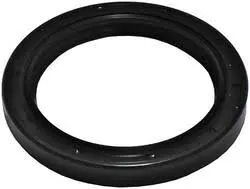10 月 . 17, 2024 21:45 Back to list
Causes and Solutions for Car Overheating and Head Gasket Failure
Understanding Car Overheating and Head Gasket Issues
Car overheating is a common problem that many drivers encounter, and it can lead to severe engine damage if not addressed promptly. One of the most critical components affected by overheating is the head gasket, a vital part of the engine. This article delves into the causes of car overheating, the symptoms of a failing head gasket, and the steps you can take to prevent such issues.
What Causes Car Overheating?
There are several reasons why a car may overheat. The most frequent culprits include
1. Coolant Issues Low coolant levels or a coolant leak can prevent the engine from properly dissipating heat. Coolant, a mixture of water and antifreeze, absorbs heat from the engine and transfers it to the radiator, where it is cooled down. If there is insufficient coolant, temperatures can rise quickly.
2. Thermostat Failure The thermostat regulates the flow of coolant to and from the engine. If it gets stuck closed, hot coolant can’t circulate through the engine, resulting in overheating.
3. Radiator Problems A blocked or damaged radiator can impede the cooling process. Debris buildup or corrosion can prevent the radiator from functioning effectively, leading to increased engine temperatures.
4. Water Pump Malfunction The water pump circulates coolant throughout the engine and radiator. If the pump fails, it can cause coolant to stop moving, resulting in overheating.
5. Failed Fan The engine fan assists in cooling the radiator by pulling air through it. If the fan isn’t working correctly due to electrical issues or a broken fan motor, it can lead to overheating, especially in traffic or while driving at low speeds.
Symptoms of Head Gasket Failure
The head gasket plays a critical role in sealing the engine's combustion chamber and maintaining pressure in the cooling system. When a car overheats, the head gasket is often the first component to suffer damage. Key symptoms of a failed head gasket include
1. Overheating Persistent engine overheating, even after coolant levels have been replenished, is a significant warning sign.
car overheating head gasket

3. Milkshake Oil A milky substance on the oil dipstick may suggest coolant has mixed with the engine oil, a sign of a blown head gasket.
4. Loss of Engine Power A blown head gasket can affect engine performance, leading to a decrease in power and acceleration and potentially causing misfires.
5. Bubbles in Radiator Gasses escaping from a blown head gasket can create bubbles in the radiator or overflow tank when the engine is running.
Preventing Overheating and Head Gasket Damage
While some causes of overheating cannot be avoided, regular maintenance and proactive measures can reduce the chances of overheating and head gasket issues
1. Regularly Check Coolant Levels Make it a habit to check the coolant level regularly and top it off as needed. Ensure that there are no leaks in the cooling system.
2. Maintain the Cooling System Flush and replace the coolant as recommended by your vehicle’s manufacturer. Also, ensure that the radiator is clean and free from debris.
3. Monitor Engine Temperature Keep an eye on the temperature gauge on your dashboard. If it begins to climb towards the red zone, take action immediately.
4. Routine Inspections Regularly inspect the thermostat, water pump, and radiator for any signs of wear or malfunction, replacing them as necessary.
5. Heat Management If you suspect that your vehicle may be overheating, pull over immediately, turn off the engine, and allow it to cool down before investigating the problem.
Conclusion
Understanding the relationship between car overheating and head gasket issues is crucial for any vehicle owner. By being vigilant and proactive about your car’s cooling system, you can prevent serious damage that could lead to costly repairs. Regular maintenance and attention to warning signs can ensure that your vehicle remains in good condition and runs efficiently for years to come.